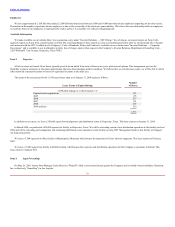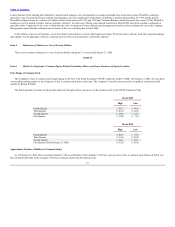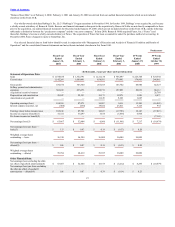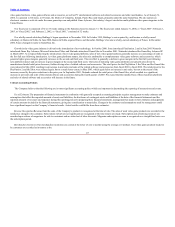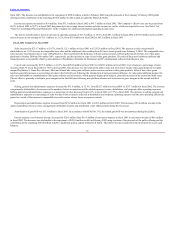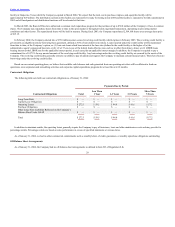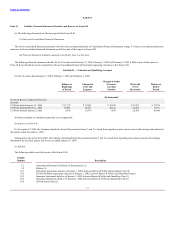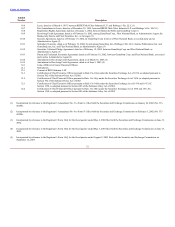GameStop 2003 Annual Report Download - page 33
Download and view the complete annual report
Please find page 33 of the 2003 GameStop annual report below. You can navigate through the pages in the report by either clicking on the pages listed below, or by using the keyword search tool below to find specific information within the annual report.
Table of Contents
amount of the store credit given to the customer. In valuing inventory, management is required to make assumptions regarding the necessity of reserves required to
value potentially obsolete or over-valued items at the lower of cost or market. Management considers quantities on hand, recent sales, potential price protections and
returns to vendors, among other factors, when making these assumptions.
Property and Equipment.Property and equipment are carried at cost less accumulated depreciation and amortization. Depreciation is computed using the straight-
line method over estimated useful lives (ranging from two to eight years). Maintenance and repairs are expensed as incurred, while betterments and major remodeling
costs are capitalized. Leasehold improvements are capitalized and amortized over the shorter of their estimated useful lives or the terms of the respective leases
(generally ranging from three to ten years). Capitalized lease acquisition costs are being amortized over the average lease terms of the underlying leases. Costs incurred
in purchasing management information systems are capitalized and included in property and equipment. These costs are amortized over their estimated useful lives
from the date the systems become operational. The Company periodically reviews its property and equipment whenever events or changes in circumstances indicate
that their carrying amounts may not be recoverable or their depreciation or amortization periods should be accelerated. The Company assesses recoverability based on
several factors, including management’s intention with respect to its stores and those stores’ projected undiscounted cash flows. An impairment loss would be
recognized for the amount by which the carrying amount of the assets exceeds the present value of their projected cash flows. No write-downs have been necessary
through January 31, 2004.
Goodwill.Goodwill, aggregating $340.0 million, was recorded in the acquisition of Funco and through the application of “push-down” accounting in accordance
with SAB 54 in connection with the acquisition of Babbage’s by a subsidiary of Barnes & Noble. Goodwill in the amount of $2.9 million was recorded in the
acquisition of Gamesworld Group Limited in June 2003. Goodwill represents the excess purchase price over tangible net assets acquired. Effective February 3, 2002,
the Company adopted the provisions of Statement of Financial Accounting Standards No. 142, “Goodwill and Other Intangible Assets” (“SFAS 142”). SFAS 142
requires, among other things, that companies no longer amortize goodwill, but instead evaluate goodwill for impairment on at least an annual basis. In accordance with
the requirements of SFAS 142, the Company completed the initial impairment test of the goodwill attributable to its reporting unit as of February 3, 2002, and
concluded that none of its goodwill was impaired. As part of this analysis, the Company determined that it has one reporting unit based upon the similar economic
characteristics of its operations. Fair value of this reporting unit was estimated using market capitalization methodologies. The Company also evaluates the goodwill of
its reporting unit for impairment at least annually. The Company elected to perform its annual impairment test during the fourth quarter of both fiscal 2002 and fiscal
2003 and concluded that none of its goodwill was impaired. Note 6 of “Notes to Consolidated Financial Statements” of the Company provides additional information
concerning goodwill. Prior to the adoption of the provisions of SFAS 142, the Company’s goodwill was amortized on a straight-line basis over a 30-year period. At
February 2, 2002, accumulated amortization was $22.0 million.
24






